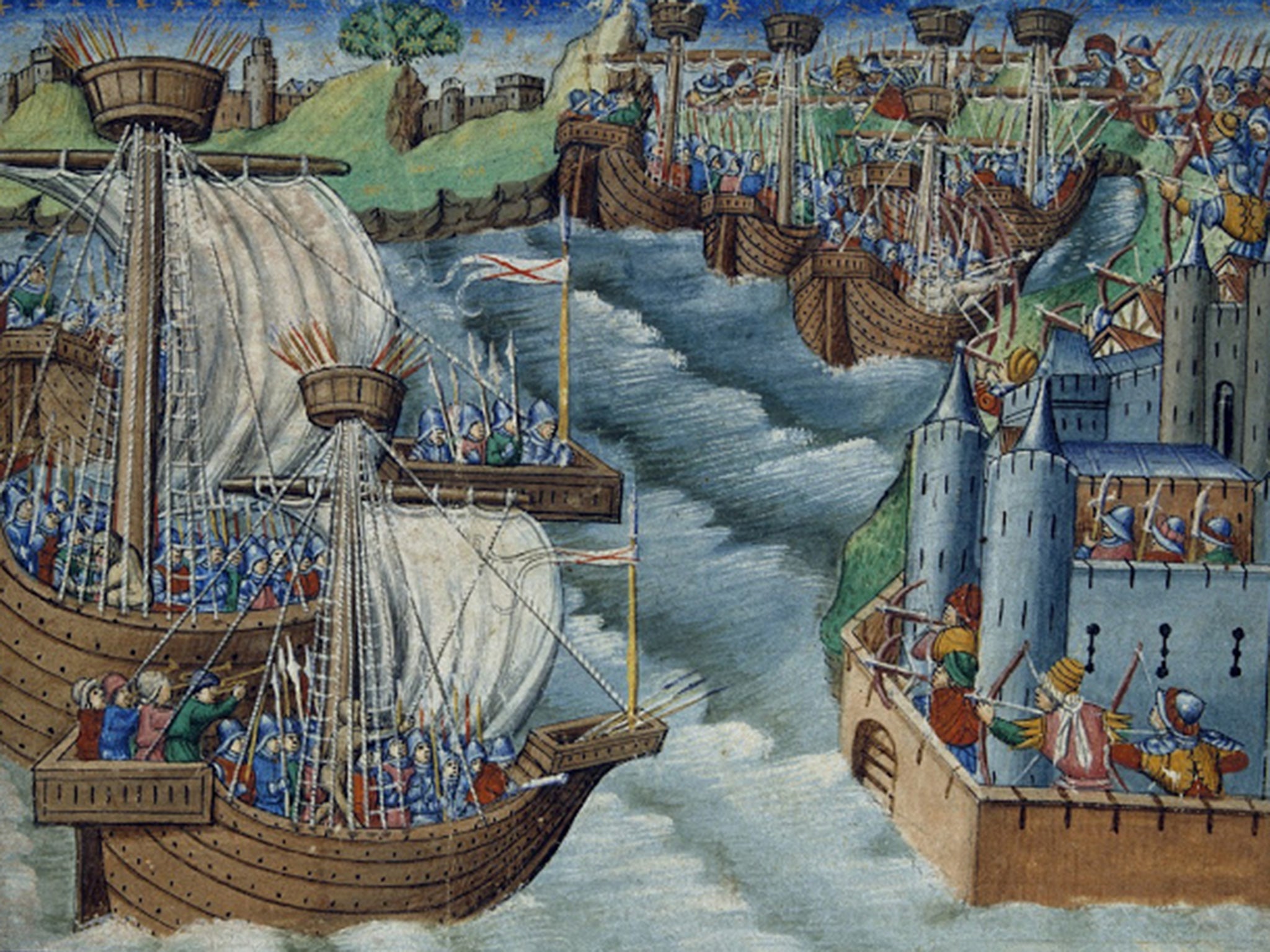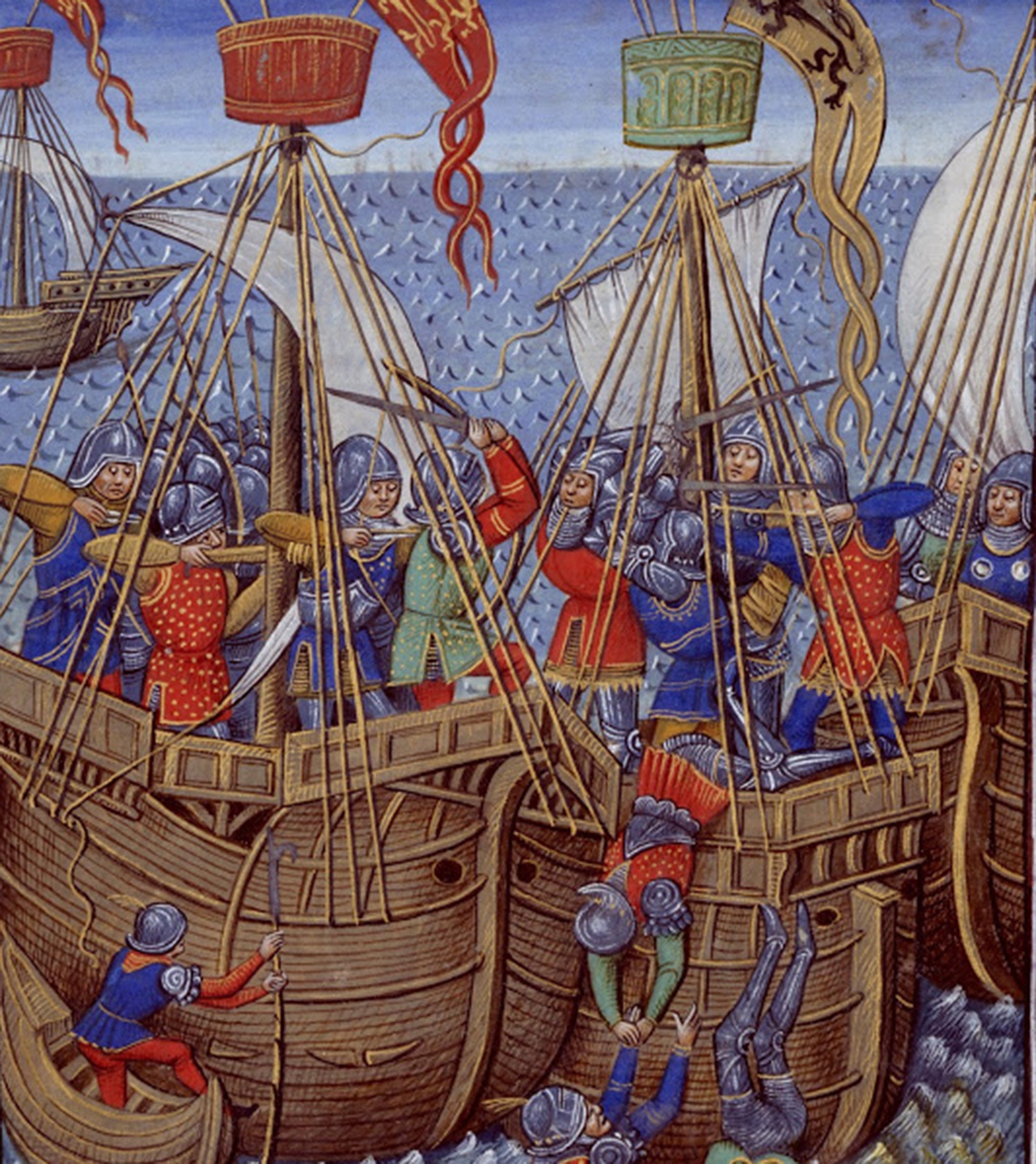Henry V warship buried in Hampshire: Historian pinpoints final resting place of one of medieval England's greatest ships
The vessel, part of Henry V's embryonic 'Royal Navy', is believed to be entombed beneath the River Hamble

Your support helps us to tell the story
From reproductive rights to climate change to Big Tech, The Independent is on the ground when the story is developing. Whether it's investigating the financials of Elon Musk's pro-Trump PAC or producing our latest documentary, 'The A Word', which shines a light on the American women fighting for reproductive rights, we know how important it is to parse out the facts from the messaging.
At such a critical moment in US history, we need reporters on the ground. Your donation allows us to keep sending journalists to speak to both sides of the story.
The Independent is trusted by Americans across the entire political spectrum. And unlike many other quality news outlets, we choose not to lock Americans out of our reporting and analysis with paywalls. We believe quality journalism should be available to everyone, paid for by those who can afford it.
Your support makes all the difference.Historians and archaeologists have tentatively identified the location of one of medieval England’s greatest ships.
Detailed archival and aerial photographic research carried out by British maritime historian, Ian Friel, has pinpointed a 30 metre stretch of the River Hamble near Southampton as the final resting place of one of Henry V’s largest warships – the Holigost (in modern English, the Holy Ghost).
The vessel is entombed in deep mud under the bed of the river.
The government’s historic environment agency, Historic England, is now planning to carry out a detailed survey of the ship. They intend to use sonar-based sub-bottom profiling equipment to ‘x-ray’ through the deep mud to create a computerized image of the vessel.
The project is of particular importance – because Henry was arguably the first English king who tried to create an embryonic ‘Royal Navy’.
“This short lived fleet was conceivably the most effective navy that England had before the Elizabethan Age, 150 years later,” said Dr. Friel who has just published a book on the subject – Henry V’s Navy, The Sea-Road to Agincourt and Conquest, 1413-1422.
Henry put England’s navy on an entirely new footing – with 25 salaried ship masters (captains), regular maritime patrols, new cutting-edge technology and even an attempt to combat the piracy that was endemic in the English Channel.
Dr. Friel first began to think that he had found the wreck of Henry V’s Holy Ghost back in the 1980s – but has only carried out additional confirmatory archival research on the subject over the past year. His full findings are likely to be published academically next year. The Holy Ghost was the third biggest ship in Henry’s navy. It was capable of carrying around 750 tonnes of weapons, equipment, men and cargo, had up to 200 crew and spent much of its time at sea – probably exclusively in the English Channel. Her exact dimensions are not yet known – but it is likely that she was between 30 and 40 metres long. It is hoped that the sub-bottom profiling survey will provide sufficient data to answer that and other questions.
As a warship, she was damaged in two great sea battles with the French – the maritime Battle of Harfleur in 1416 and the Battle of Chef de Caux (near the mouth of the River Seine) in 1417.
At Harfleur, it had been the flagship of the king’s brother and right hand man, the Duke of Bedford – the English royal who years later would be responsible for burning Joan of Arc. Indeed a letter from the Duke, written on-board the Holy Ghost in 1416, now in a local English county archive, is one of the earliest known surviving letters ever written on-board an English ship.
The vessel was also the earliest English ship known to have had repairs carried out by a diver – a Welshman called Davy Owen. Additionally, the ship is interesting for the number of significant named individuals associated with it - including the vessel’s builder (the early 15th century Southampton merchant and MP, William Soper); the vessel’s master (captain), Jordan Brownyng; and one of Henry’s top military commanders, Sir Thomas Carew.
The Holy Ghost was also important for the way it would have symbolized Henry’s personal political and religious beliefs. Historical research over recent years has revealed that the ship bore one of his personal royal mottos – ‘Une sanz pluis’ (borrowed from a French version of the Iliad) – meaning literally ‘one and no more’, expressing the king’s ultra-autocratic political belief that he alone, by divine right, was absolute master of England.

Quite apart from its importance in English naval history, the Holy Ghost – in a previous incarnation – had also played a part in Spanish history. The vessel had been rebuilt from the timbers of a captured Castilian ship the Santa Clara, which was said to have been associated with the Queen of Spain – almost certainly Catharine of Lancaster, the English-born widow of the Castilian king, Enrique III. After 1406 she had been the co-regent of Spain during the minority of their son, until her own death in 1418.
The Santa Clara had been captured by English pirates, associated with Southampton MP, William Soper, in the winter of 1413/1414 (a time when England and Castile were technically at peace with each other). The ship was then taken to Southampton and, on King Henry’s orders, was rebuilt there by Soper as the Holy Ghost at the extraordinary cost to the royal exchequer, in modern equivalent cash terms, of up to £10 million.

The wreck has been tentatively located just 50 metres away from the wreck site of Henry V’s largest ship, the Gracedieu. That vessel, which now has protected status, was in Henry’s day the largest ship in Europe (some 66 metres long) – and was not surpassed in size in England’s navy until the 16th century.
Archaeologists believe that the wreck of the Holy Ghost – is likely to be better preserved than that of the Gracedieu.
The Holy Ghost was a vessel that had seen action in the years immediately after Henry V defeated France at Agincourt. But in the end it was laid up in Henry’s main naval anchorage – the River Hamble – where it was ultimately abandoned and forgotten for almost 600 years.
Duncan Wilson, Chief Executive of Historic England believes that the wreck of the Holy Ghost “holds the possibility of fascinating revelations in the months and years to come.”
“Historic England is committed to realizing the full potential of the find,” he said.
Join our commenting forum
Join thought-provoking conversations, follow other Independent readers and see their replies
Comments